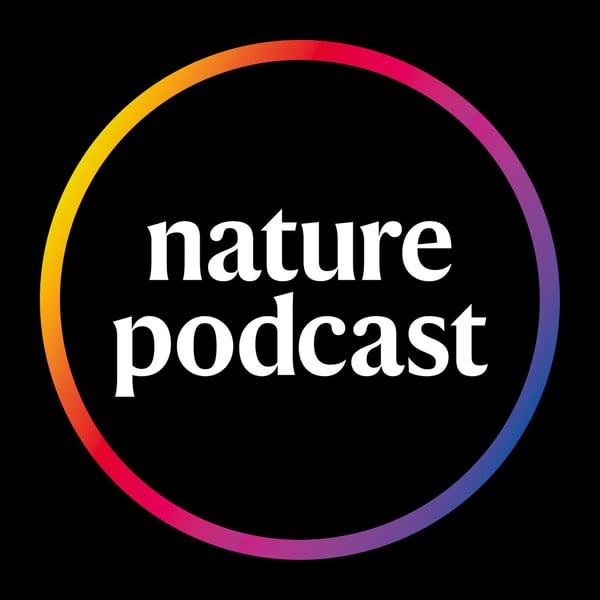What a trove of potato genomes reveals about the humble spud
Nature Podcast
[email protected]
4.4 • 859 Ratings
🗓️ 16 April 2025
⏱️ 33 minutes
🧾️ Download transcript
Summary
In this episode:
00:46 A potato pangenome
Researchers have created a ‘pangenome’ containing the genomes of multiple potato types, something they believe can help make it easier to breed and sequence new varieties. The potato's complicated genetics has made it difficult to sequence the plant's genome, but improvements in technology have allowed the team to combine sequences, allowing then to look for subtle differences in between varieties.
Research Article: Sun et al.
09:57 Research Highlights
How ancient DNA analysis revealed that unusually bound medieval books are covered in sealskin, and top quarks and their antimatter counterparts are detected after nuclear smash-ups at the Large Hadron Collider.
Research Highlight: Mystery of medieval manuscripts revealed by ancient DNA
Research Highlight: Top quarks spotted at mega-detector could reveal clues to early Universe
12:30 The top cited twenty-first century research papers
Analysis from Nature reveals the 25 highest-cited papers published this century and explores why they are breaking records. We hear about the field that got the highest number of papers on the list, and whether any feature in the all-time top citation list.
News Feature: Exclusive: the most-cited papers of the twenty-first century
News Feature: These are the most-cited research papers of all time
News Feature: Science’s golden oldies: the decades-old research papers still heavily cited today
21:47 Briefing Chat
Re-analysis of a cosmic collision shows evidence of a planet spiralling into its host star, and how shrugging off lighting strikes gives tonka bean trees an evolutionary edge.
Science: Astronomers spot a planetary ‘suicide’
Live Science: Tropical tree in Panama has evolved to kill its 'enemies' with lightning
Vote for us in this year's Webby Awards
Vote for How whales sing without drowning, an anatomical mystery solved
Vote for Cancer-busting vaccines are coming: here's how they work
Hosted on Acast. See acast.com/privacy for more information.
Transcript
Click on a timestamp to play from that location
| 0:00.0 | nature in an experiment |
| 0:05.0 | why is blight so far like it sounds so simple they had no idea but now the data's |
| 0:12.0 | I find this not only refreshing but but at some level astounding nature |
| 0:20.0 | welcome back to the Nature. |
| 0:22.2 | Nature. |
| 0:25.8 | Welcome back to the nature podcast. |
| 0:29.6 | This week, a potato pan genome. And the most cited research papers of the 21st century. |
| 0:35.0 | I'm Benjamin Thompson. |
| 0:36.2 | And I'm Nick Pertr-Chow. |
| 0:45.3 | Okay. 21st century. I'm Benjamin Thompson and I'm Nick Perchichal. First up on the show, researchers have been creating a collected group of genomes known as a pan genome to understand the genetic diversity of the humble potato. |
| 0:57.7 | This effort could help in the breeding of new potato varieties, such as those adapted to disease or |
| 1:03.7 | climate change. Now, potatoes are incredibly flexible. You can boil them, you can mash them, |
| 1:10.4 | and you can even feed over |
| 1:11.8 | one billion people with them. But if you want to make a new variety of them, that isn't so easy. |
| 1:19.2 | So compared to their cultivars, potato is practically difficult because of the tetraploination. |
| 1:26.5 | This is Sergio Tussaud, a geneticist who's very familiar with the difficulties |
| 1:31.7 | potatoes and the breeding of their different varieties or cultivars pose. |
| 1:37.5 | You see, the potato is tetraploid, meaning that instead of having two sets of chromosomes, |
| 1:47.8 | like you and I do, potatoes have four. |
| 1:52.5 | So this makes it particularly difficult what is related to breeding programs, right? |
| 1:57.4 | So you want to introduce new traits or characteristics, then it's very difficult to put it in the four copies of the genome. |
| 2:00.0 | So that means that the breeding programs in potato has not been very effective |
... |
Transcript will be available on the free plan in 17 days. Upgrade to see the full transcript now.
Disclaimer: The podcast and artwork embedded on this page are from [email protected], and are the property of its owner and not affiliated with or endorsed by Tapesearch.
Generated transcripts are the property of [email protected] and are distributed freely under the Fair Use doctrine. Transcripts generated by Tapesearch are not guaranteed to be accurate.
Copyright © Tapesearch 2025.

